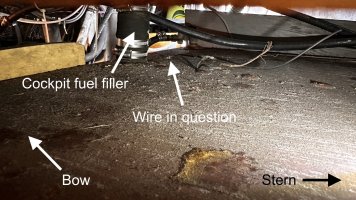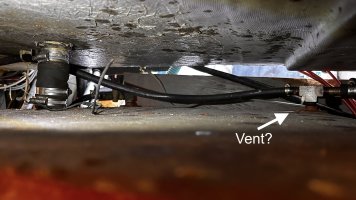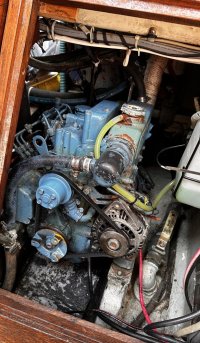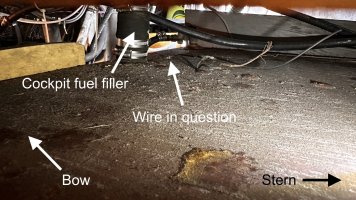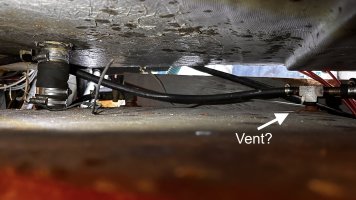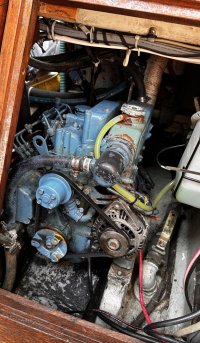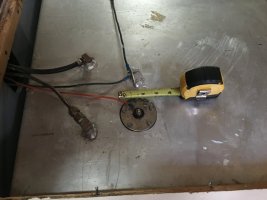Dagny
Member I
Hello! Total newbie here but hoping someone might be able to answer this question about my recently acquired 1975 32-2 Hull #323 with a 3-cylinder Universal (?) Diesel:
There's a non-working fuel gauge by the RPM gauge and throttle, but I can't seem to find a fuel level sending unit anywhere on the top of the tank. There's only a wire coming out of a small hole on the top of the tank, but it's been severed. Does the tank have a fuel sender built in?
The first photo shows the fore end of the tank (taken from the access panel in the aft/port side berth).
The aft/starboard end of the tank only (second photo) has what I assume to be the fuel vent line coming out of it (in a T-fitting). Wondering why one line isn't enough?
Would appreciate any and all feedback!
Thank you!
Dagny
There's a non-working fuel gauge by the RPM gauge and throttle, but I can't seem to find a fuel level sending unit anywhere on the top of the tank. There's only a wire coming out of a small hole on the top of the tank, but it's been severed. Does the tank have a fuel sender built in?
The first photo shows the fore end of the tank (taken from the access panel in the aft/port side berth).
The aft/starboard end of the tank only (second photo) has what I assume to be the fuel vent line coming out of it (in a T-fitting). Wondering why one line isn't enough?
Would appreciate any and all feedback!
Thank you!
Dagny

